From 1975 to 1982 political
activity and the events that took place were so important that
professional matters were relegated to the back burner. One needed
to work and make money to cover basic needs, but the celebration,
the excitement, emotion and passion were out there on the
street.
The Referendum, the elections, the
legalization of political parties, electoral campaigns, the 23-F
(date of the military coup d'état) and many other events changed
Spain. The people of our generation feel as though we were
protagonists in all these events. My life at the side of Carmen
Rico Godoy was an ongoing experience at the forefront of all that
was going on in Madrid in that time. The first socialist meeting in
Canillejas, with Francois Mitterrand, Mário Soares and Felipe
González, the presentation of the CNT (National Confederation of
Labor) in San Sebastián de los Reyes, the festivities of the PCE
(Spanish Communist Party) in the Casa de Campo and demonstrations
against fascism, ultra-rightwing terrorism, etc., caused our lives
to fluctuate between extreme joy and sadness.
At the professional level, I
continued to intensify my work as a distributor and produced two
films about which I am very proud: "La viuda andaluza" (The Widow
from Andalusia) and "La verdad sobre el caso Savolta" (The Truth
about the Savolta Affair).
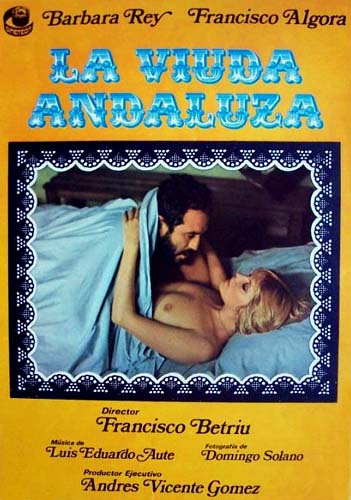
During this period, I was in
constant contact with journalists from the magazineCambio 16. One
of them, Xavier Domingo, had written a very comical and rude book
based on "La lozana andaluza" (The Portrait of Lozana: The Lusty
Andalusian Woman), the picaresque novel by Francisco Delgado about
which Vicente Escrivá had just made a successful film. Inspired by
that book and at my request, Francisco Betriu (whom I met after
placing a magazine ad for his first film "Corazón solitario") wrote
a hilarious script that we ultimately turned into a musical with
original songs by Luis Eduardo Aute. Bárbara Rey made her debut as
leading actress and part of an extraordinary cast which Tod
Browning would have wanted for his horror flick "Freaks" (1932). We
filmed for two months at the Ritz Hotel in Barcelona where I
discovered the concerts of the musical group, La Trinca in Canet,
and made new friends including Maruja Torres.
A magnificent review was published
inCambio 16on "La verdad sobre el caso Savolta" (The Truth about
the Savolta Affair), which I read and later met the author, Eduardo
Mendoza, in New York, where he was working as an interpreter.
At the time, Antonio Drove was
highly regarded and recognized as a talented director by some film
critics and technicians, particularly by the group known as "Los
Argüelleros". His prestige was supported by an excellent short film
he made, "Caza de brujas" (Witch Hunt), which was banned by the
management of the Escuela de Cine. He also directed a comedy for
José Luis Dibildos. I asked him to write the screen adaptation and
direct "La verdad sobre el caso Savolta". After a year of writing
the script, with Antonio Larreta, and a complicated editing process
of what was a co-production with Italy and France, we embarked on
one of the most ambitious projects in Spanish cinema, from a
creative and financial point of view, of the 1970s. It was a movie
I wish I could make over now because, at the time, it was too big
for me as a producer. I financed it with the income from two film
purchases: "Padre Padrone" and "Libertad sexual en Dinamarca". In
order to produce the movie, I set up a production company, Domingo
Pedret, S.A., and a distribution company, Cinema 3, S.A. together
with several partners from Barcelona, with Juan Torras, from the
famous company Torras-Hostench, amongst them.
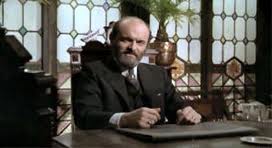
The filming was very problematic,
with serious differences between Pedret and Drove; they were
eventually resolved. When the movie was finally released, those who
saw it have praised it ever since. Most likely, this film marked
and conditioned Antonio Drove's future as a filmmaker. Despite news
media reports about differences between us, I always felt great
affection for Antonio and considered him to be an excellent
professional. Whenever the opportunity presented itself, I have
expressed my interest in working with him again. In fact, we hired
him years later as co-scriptwriter for the screen adaptation of "El
embrujo de Shanghai" (The Shanghai Spell) which he started writing
with Víctor Erice.
My relationship with Diego
Santillán, the loosening of censorship in Spain and the commercial
success of erotic films from abroad, encouraged me to produce
"Silvia ama a Raquel" (Silvia loves Raquel), a story about two
lesbians. One of the leading characters was Violeta Cela, who later
on worked with me in "El año de las luces" (The Year of
Enlightenment) and in the 1990s became famous as a promoter of
erotic telephone lines. The finishing touch of a decade of blunders
as a producer came when "confused and influenced" by bad company, I
produced a monstrosity of a film, stupid and lacking in substance,
called "Cocaína" (Cocaine). It was an homage to photographer Julio
Wizuete, whose wife died in a car accident on Km 301 of the road
between Madrid and Andalucia in which I too had been involved. I
don't recall having ever seen the film, which was never of interest
to me and I still don't understand how I could have produced
it.
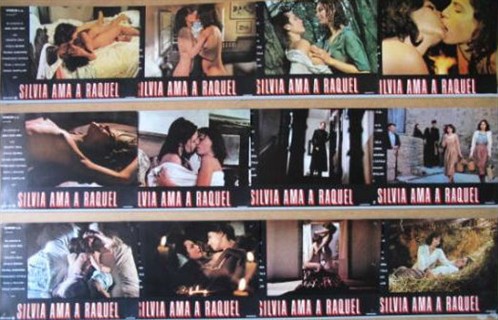
I have always thought that
producers and directors should never develop a relationship or
friendship with film critics. It is the only way of mitigating your
anger towards them, of not conditioning their work and, as actor
Santiago Segura would say, to avoid quarrels with buddies. My case
with Miguel Rubio was an exception. We used to live very near one
another and we both loved Real Madrid. Besides, Miguel was a
socialist and we shared that important sentiment. One day Miguel
received a telephone call from Ramón Mendoza, a famous wealthy
entrepreneur who, at the time, was being condemned byCambio 16for
being a collaborator and covering for Russian spies. Mendoza was
interested in getting to know the socialist leaders who were
opponents of the UCD government and also wanted to become president
of the Real Madrid soccer team. He thought that Miguel could help
him in attaining both goals. To obtain his collaboration, he
offered to go into business with him. Miguel asked for my advice
and help to offer Mendoza something from which we might both
profit. I suggested that he propose to Mendoza to finance the
purchase of foreign films. Shortly after, we set up a new company,
Intercine. Mendoza brought José Luis Ballvé, the owner of
Campofrío, into the company. He made space available for us at his
offices on Avda del Generalísimo Street, which space we were
supposed to share with the sons of well-known communist Santiago
Carrillo, Azcárate and Jorge Lacasa, all of them "Russian children"
(Spanish children sent to Russia during the Spanish Civil
War).
But it didn't take Mendoza long to
start suspecting, and rightly so, that Miguel and I were little
more than a couple of insignificant sympathizers of the PSOE (The
Spanish Socialist Party) and didn't have much to offer him. Our
relationship cooled and the business romance ended a few months
later. It was useful in that it enabled me to buy "Cristo se paró
en Éboli" (Christ Stopped at Eboli), directed by Francesco Rosi,
and a couple of other films of little relevance. I was also able to
pay outstanding debts for "Corridas de alegría" (Joyful Orgasms),
"Silvia ama a Raquel" (Silvia Loves Raquel) and "Cocaína"
(Cocaine), my latest productions. But I had to get back to reality
and so, from my comfortable office at La Castellana (then called
Avda Generalísimo), I moved to the tiny office I had on Trujillo 7
Street, near Sol district. As to Mendoza, he eventually became a
superb president of Real Madrid, and he invited me to his box at
the stadium when in 1994 we were awarded the Oscar for the film
"Belle époque".
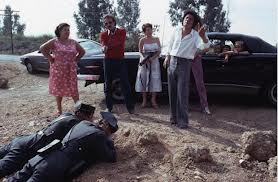
"Corridas de alegría" -inspired by
the Japanese film directed by Oshima "Ai no corrida" (In the Realm
of the Senses) - was an attempt at making a road movie along the
lines of the American films from the 1970s that had made the genre
fashionable. Gonzalo García Pelayo, director and co-writer, got in
touch with me with his film project, "Frente al mar" (Facing the
Sea), which I renamed "Intercambio de parejas frente al mar"
(Couple Swinging Facing the Sea). It turned out to be moderately
successful. Gonzalo is a very peculiar character: a bohemian and
extremely realistic individual at the same time, a fundamentalist
from Seville, an artist and a dreamer though also practical, as
well as the father of dozens of children from many different women.
A multifaceted individual and a great producer of Andalusian music,
he was responsible for the big hits of singers María Jiménez, Lole
and Manuel and others.
"Corridas de alegría" was shot in
the South of Spain, following the journey of its protagonists, who
travel from Seville to Cadiz, crossing the Ronda mountain range and
Grazalema. The film was in praise of the free Andalusian spirit,
its amusing nature and poverty, a portrait of pre-democratic Spain
where elements of the Franco regime, though in decline, still
existed. It was a film that went unnoticed by the public due to
inefficient distribution and a poor launch, for which I blame
myself entirely - but which people like José Luis Guarner, the best
cinema critic of the last 50 years, considered to be a small
masterpiece.
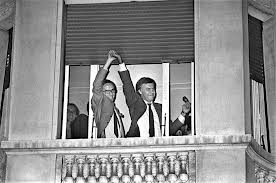
In 1981 and 1982, I was dreaming
about a Socialist victory in the general elections. When it
happened and the fervor of the celebrations were over, I thought
about intensifying my work as a producer and not settle with just
making my living as a distributor. I still kept my small office on
7 Trujillo Street and was a neighbor of the notorious distributor
José Esteban Alenda. Also, I had a small team of collaborators,
with José Luis García and Juan Campos among them. Both José Luis
and Juan are still very close to me. Together, we achieved a great
deal of success as distributors, the most noteworthy of them being
"El último emperador" (The Last Emperor), and we managed to
consolidate a distribution network based on our regional agents
who, as we were their best suppliers, responded with interest and
good will to all of our collaboration proposals. They would make
advance payments to me involving large amounts of money through
bills of exchange. This made me an expert in the art of discount
(on note receivable and promissory notes) and banking finance while
at the same time enabling me to keep up a regular production pace,
something I had dreamt about for such a long time.
At the age of almost 40 and with 20
years of cinematographic experience, I had the urge to become a
great producer. My instinct advised me to make commercial films
that might enable me to make good profits without having to depend
on distribution activities to keep going. And making commercial
movies in those days meant having to approach one man in
particular: Mariano Ozores, the indisputable "king of the box
office". I convinced him to make two films with me, "Los caraduros"
and "El pan debajo del brazo". The first of these was signed by his
brother Antonio, although it was directed by Mariano because the
latter had an exclusive contract with Ízaro Films, which guaranteed
him four films per year. Mariano wasn't very busy at the time and
because of that he entered into an alliance with me. But soon
enough, my ideas about production clashed with his. I repeatedly
told him some basic things, such as filming with direct sound, to
ensure that the actors had learned their lines. In addition, I
suggested that he stop constantly repeating their part in the cast
and a few other little things that I deemed essential. My
relationship with Mariano was excellent but unfortunately my
"creative" contribution was detrimental for the marketing of the
type of films Mariano made and the two films were only moderately
successful. Perhaps I was too late when I resorted to Ozores
because it is true that, since then, he hasn't made any big box
office hits.
At the same time as the Ozores
situation went on, my relationship with Harry Alan Towers resulted
in the co-production of a series of films for the US-based Playboy
Channel. At the time, it was inexpensive to film in Spain. We had
$400,000 dollars at our disposal, per film, supplied to us by the
American company. With a French director, Claude Mulot, and a
Spanish director, Paco Lara Polop, we shot "La venus negra" (Black
Venus) and "Christina" respectively. We subsequently changed the
latter's name to "Christina y la reconversión sexual" (Christina
and the sexual restructuring), inspired by the industrial
restructuring which the Minister of Economy, Carlos Solchaga,
launched that year.